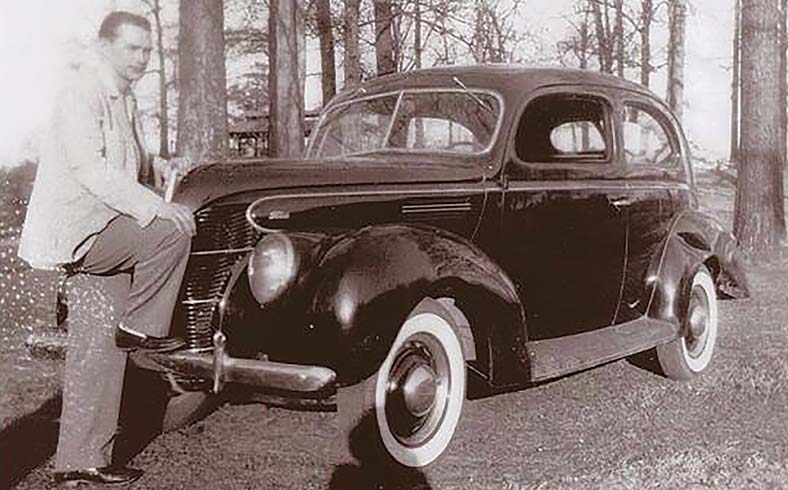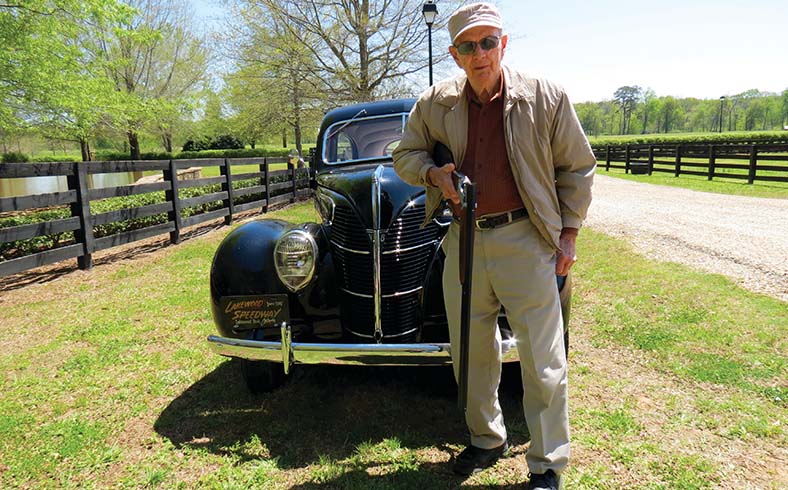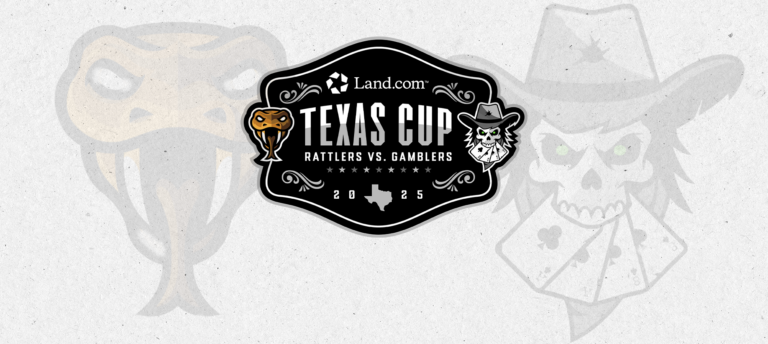
 Inside a canvas and leather gun slip, the new 12-gauge Ruger Red Label looked at home beside me leaning across the spacious back seat of the 1939 Ford Sedan moonshine runner.
Inside a canvas and leather gun slip, the new 12-gauge Ruger Red Label looked at home beside me leaning across the spacious back seat of the 1939 Ford Sedan moonshine runner.
Cruising the legendary bootlegger Route 9 that connects Dawsonville, Georgia to Atlanta, 82-year-old Charlie Mincey recounted from the mohair passenger seat the glory days of running 200 gallons per night on snaky dirt roads—his younger eyes glancing into the rearview mirror for headlights of Revenue Agents in their own souped-up Fords confiscated from Charlie’s “moonshine trippin´” buddies. At first sight of distant beams, Charlie would open-up the triple-carburetored flathead V8 in a twisty 60-mile sprint to the moonshine shot houses of Atlanta at speeds that approached 100 miles per hour. Some mornings, after a bumper-to-bumper, cat-and-mouse chase, Charlie’s car would end up in his daddy’s body shop to plug the bullet holes.
As Charlie tells it, “More people were arrested in Dawsonville for moonshine than anywhere else in the country.”

The Ford, a tribute to Charlie’s legacy as moonshine hauler and early Georgia stock-car celebrity, was owned and driven by his middle-aged son, Chuck. Helper-springs in the rear suspension, which compensated for the hefty contraband, were a telltale sign when he bought the car locally that it had seen moonshine action. Like Charlie’s own 1939 midnight special, Chuck’s Ford was black with a gray mohair interior, faux wood dashboard, three-speed stick and high-performance gearing in the rear axle. The stock V8, however, paled in comparison to Charlie’s screamer. In addition to that triple two-barrel set-up, Charlie’s engine was bored, stroked and fitted with a hot camshaft. Charlie recalled with a modest smile that his Ford was the fastest car in Atlanta. All we can say is that he never actually got caught by the police or Revenue Agents during his audacious night-time runs.
More people were arrested in Dawsonville for moonshine than anywhere else in the country.
I spent two days with Charlie and Chuck zigzagging the wooded back roads where moonshine was king to evaluate the second-generation Ruger Red Label on sporting clays.
Our ramblings would take us to the Foxhall Resort & Sporting Club, Barnsley Garden’s SpringBank Sporting Club, Etowah Valley Sporting Clays, Georgia Racing Hall of Fame Museum to see a special exhibit devoted to Charlie, taste some of that home-brewed Dawsonville moonshine and stop at a few roadhouses for lunches of barbeque, fried chicken or meat plus two and sweet tea.
Just as Chuck’s 1939 Ford resembled Charlie’s hot rod, the reborn Ruger Red Label is nearly indistinguishable from the original despite a complete redesign that led to a $500 rollback in the MSRP.
Ruger had introduced the Red Label over/under in 1977 as an inexpensive 20 gauge costing $480. Shortly afterwards the 12 gauge became available eventually followed by a 28 gauge. The Ruger Red Label had risen to an American icon—introducing generations of wing and clays shooters to their beloved sports.
During its tenure, the first-generation Red Label saw enhancements such as screw-in chokes, optional straight English grip and custom engravings that embellished the definitive, plain stainless-steel receiver.

But time proved a harsh judge on the Ruger Red Label. The shotgun endured growing criticism of poor finish, harsh recoil and heaviness. By 2011, the MSRP had risen 275 percent to nearly $1,800. While the Ruger Red Label remained unchanged during its 37 years, over/unders from Beretta, Browning, Caesar Guerini and Turkish manufacturers mounted an assault either through superior quality or lower prices. Concurrently, semi-autos figured into the equation of younger shooters in particular who found them cooler in every possible way. Ruger eventually discontinued the Red Label in 2011 as the shotgun’s value proposition eroded beyond repair.
In 2014, the 12-gauge Ruger Red Label emerged totally re-engineered. The list price is $1,399 but dealers will likely sell the shotgun in the neighborhood of $1,100. For the new Red Label, Ruger’s mission was to overhaul manufacturing with the intent of producing a better and cheaper shotgun than the original.
Craig Cushman, Product Manager for the Red Label, explained the receiver drew the most attention by Ruger. The first-generation Red Label receiver had been made from two stainless-steel halfs welded together. The method demanded individual castings, following by multiple steps of heat treatment, straightening and finishing so that it would appear as a single, seamless component. Under the old process, trunnions—the interior round pivots on which the barrels swiveled—were added after the initial casting, followed by a painstaking manual alignment to help ensure effortless and reliable operation.
“It was difficult and time consuming to make,” Craig said of the receiver.
The latest Ruger Red Label receiver is cast as one piece with the trunnions molded in. “We took a tremendous amount of labor out the production,” he added.
Naturally, Ruger upgraded the machines used in manufacturing, although retained the same materials. This investment also yielded an array of internal components fashioned on digital CNC equipment for more precise tolerances and greater reliability.
“Every part on the Red Label was in some way re-engineered,” Craig noted, including the addition of two-inch forcing cones and back-boring to the second-generation, cold-forged-hammered lighter, vented barrels. The stainless-steel receiver’s edges benefited from rounder edges and tight wood-to-metal seams along the updated contemporary rake of the boxlock body.
Currently, only the 12 gauge is available, but we can expect a 20 gauge in the coming months if demand warrants.
Pachmayr Decelerator recoil pads are standard for better recoil management. The Red Label continues with a mechanical trigger for assured second shots. The oil-finished American walnut stock features a 1½-inch drop at comb, 2½-inch drop at heel and a 14½-inch length of pull. The 12-gauge Red Label can be ordered with 26-, 28- or 30-inch barrels with weight varying from 7½ to 7.9 pounds depending on barrel length. It’s packaged with five Briley steel-compatible chokes (two skeet, one full, one modified and one improved cylinder). The auto-safety may annoy some folks.
Ruger claims that the balance point had been moved rearward for a better swing over the earlier Red Label, although many could argue that the 12 gauge is still too heavy.
Over the next 48 hours, we were about to take on the re-engineered Ruger Red Label and its critics by shooting sporting clays as the 1939 Ford Sedan motored through Georgia’s moonshine country.
In Part Two of the series, we’ll visit Foxhall Resort & Sporting Club and Barnsley Garden’s SpringBank Sporting Club to shoot the Ruger Red Label. Part Three will take us to Etowah Valley Sporting Clays, Georgia Racing Hall of Fame Museum in Dawsonville and some moonshine sippin´.
Read more: Sporting Clays in Moonshine Country With the New Ruger Red Label: Part Two
Read more: Sporting Clays in Moonshine Country With the New Ruger Red Label: Part Three


